Boeing has unveiled a new concept for a stealthy tactical cargo aircraft with a blended wing-body, or BWB, design. Though the company has been funding this project internally so far, it comes nearly two weeks after Secretary of the U.S. Air Force Frank Kendall said having more survivable airlifters and aerial refueling tankers will be critical in future high-end conflicts against near-peer adversaries, especially China.
A model of the newly revealed BWB concept has been on display at Boeing’s booth at the 2023 AIAA SciTech Forum and Exposition, which opened on Monday just outside Washington, D.C. A company representative on the show floor, as well as its main media relations office, have provided The War Zone with additional information and images.
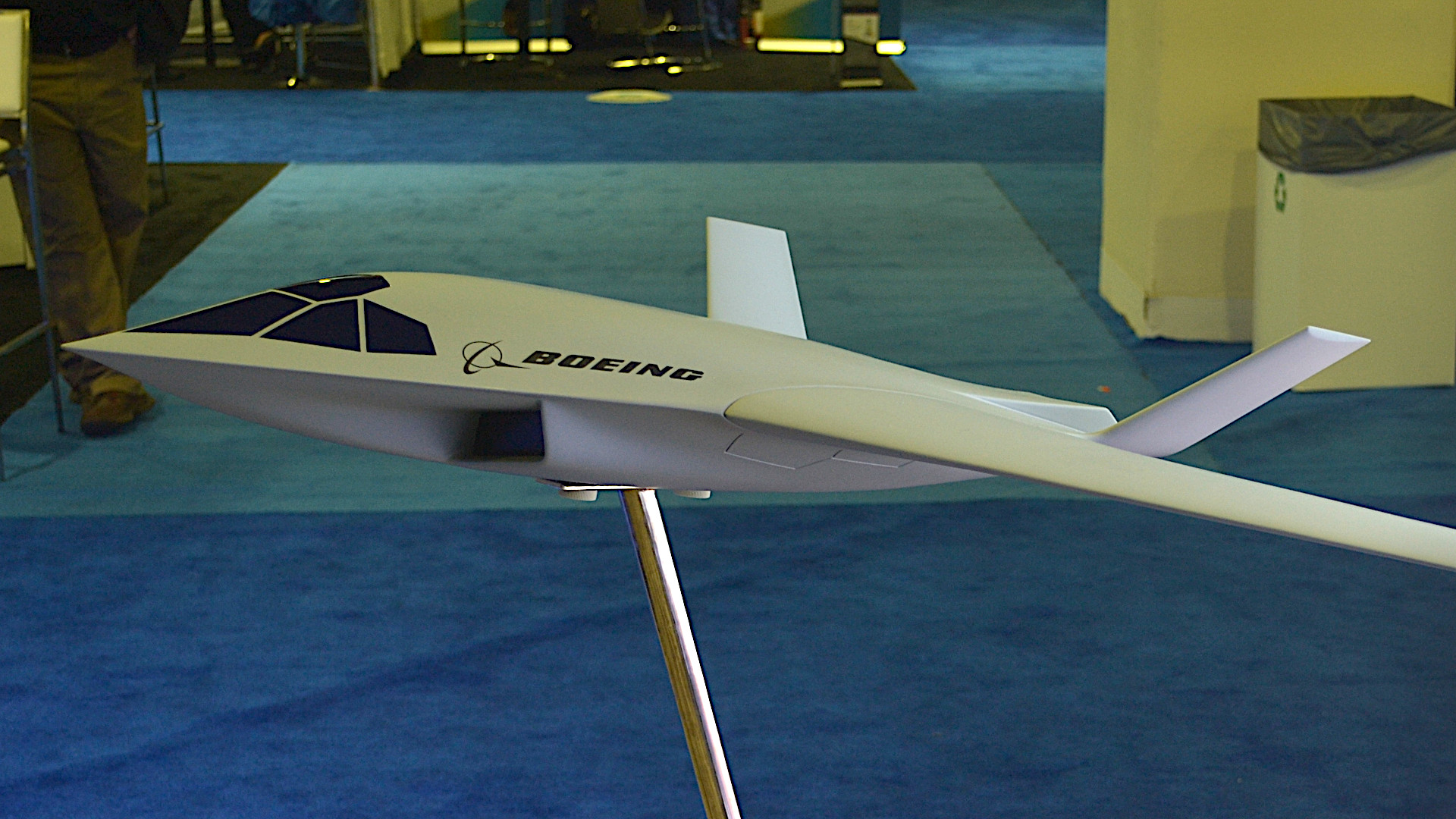
“We thought it was a good time to share the major features of our Blended Wing Body concept, in lieu of the concepts we have shown previously to represent our BWB investigation,” according to a statement Boeing gave to The War Zone. “We are continuing BWB concept research activities with government customers to advance the state of the art in military transport aircraft design.”
Boeing does have a long history of work related to BWB designs. This includes the development and actual flight testing of multiple versions of the X-48, an uncrewed subscale design, under contract to NASA between the late 2000s and early 2010s.

Though BWB designs have flying wing-like planforms and often evoke the general look of very stealthy designs, such as the B-2 and B-21 stealth bombers, this general configuration is not automatically low-observable. The more immediate benefits that a BWB arrangement might offer have to do with greater aerodynamic efficiency and, as a result, increased fuel economy and overall range. Internal volume can also be a plus.
However, the Boeing representative that The War Zone spoke to at the AIAA SciTech event said the newly unveiled airlifter concept represents a “substantial deviation” from the company’s previous BWB developments. This includes stealthy design features, such as a fuselage with at least some chined edges and a more beak-like nose, as well as a pair of fully internal jet engines. Its splayed tail is also notable.

Many previous Boeing BWB designs, including the X-48 series, have had broader, more rounded fuselages and noses, as well as engines mounted in pods on top of the center of the rear fuselage. However, the company did also craft something closer to its newly revealed concept more than a decade ago as part of an Air Force-led program called Speed Agile, which you can read more about here, although that was not fully a BLB design.

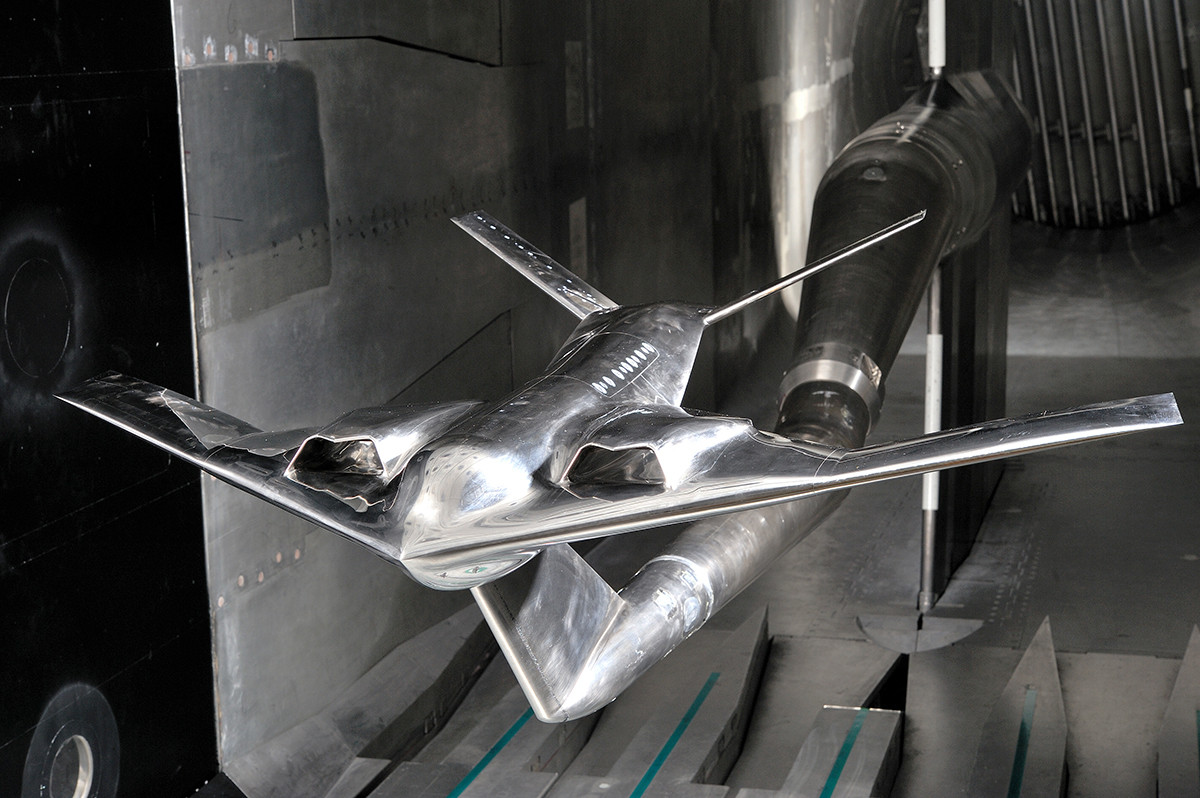
The new BWB airlifter design has partial serpentine ducting incorporated into its engine inlets, according to the company representative. This helps to obscure the turbine fan blades, which are especially radar-reflective if left exposed. When combined with fan-face baffles, they can be quite effective at significantly lowering the radar cross-section even from the critical directly head-on aspect.
The exhaust and tail configuration also appears to be designed to reduce the aircraft’s infrared signature by blocking the direct line-of-sight into the exhaust from most angles and especially from below. This would also reduce radar signature from certain aspects and is a very common low-observable aircraft design trait that dates back to the dawn of stealth.

The model also features an interesting multi-section cockpit window arrangement, including a large panel right on top of the forward fuselage. Boeing’s representative at the AIAA SciTech event said that the configuration of the windows, at least at present, is entirely notional and not necessarily reflective of any other design considerations. Still, that upper window could be beneficial for aerial refueling.
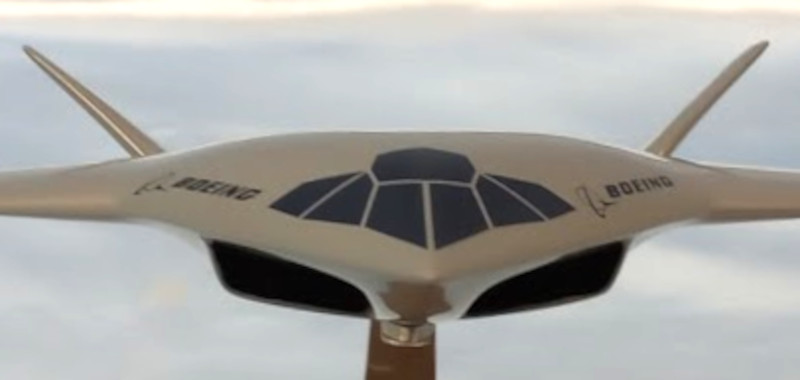
This is not to say that Boeing isn’t also hoping to reap the general efficiency benefits of a BWB planform. The War Zone was told that this design concept could offer around 30 percent greater fuel efficiency over a traditional cargo aircraft with a comparative payload capacity. As it stands now, it is designed around a payload capacity roughly equivalent to that of a C-130 Hercules. A standard C-130J variant has a maximum payload capacity of around 42,000 pounds, according to the Air Force.
That being said, the ‘cargo box,’ as well as other elements of the design, could very well be scaled up or down, or otherwise altered in shape down the road to meet customer requirements, according to the company. The design, or derivatives thereof, could potentially be adapted to other mission sets in the future, such as aerial refueling. The underlying design does not preclude the potential for future uncrewed or pilot-optional variations, either.

The design, overall, remains in a very early concept stage. Boeing has been using digital engineering techniques, something that is becoming increasingly common in advanced aerospace work, and more traditional methods in its development. Various elements of the new BWB design, including the airflow through its big ventral inlets, are set to be further analyzed through advanced modeling.
As noted at the beginning of this piece, Boeing has been using internal research and development funding for this work, but the company is clearly looking to pitch the design, or derivatives thereof, to various customers in the future. This includes the U.S. military, and the Air Force more specifically, where there is growing interest in the kinds of capabilities that stealthy BWB airlifters and tankers might offer.
The War Zone outlined a detailed case for why the Air Force would need a stealth tanker, specifically, the better part of a decade ago and called attention back to this reality on multiple occasions since then. The demand for more survivable tankers and transport aircraft, and the underlying issues driving that, have only grown in the intervening years.
“Mobility is driven by the threat changes. It’s driven by what the threat is doing to reach out to increasingly long ranges to engage our aircraft,” Air Force Secretary Frank Kendall said during an online talk hosted by the Council on Foreign Relations (CFR) think tank in Washington, D.C., earlier this month. “Traditionally, we could take a commercial derivative aircraft, turn it into a tanker or a transport… [But] they’re not designed with a high premium on—or a high set of requirements for survivability, for resilience.”

“The threat’s taking that freedom [of design] away from us,” Kendall continued. “So we are looking at—and it’s too early to have any results on this yet—we’re looking at a next generation of capability. And you mentioned blended wing-body. That’s one of the very prominent candidates.”
“That doesn’t exist in the commercial world yet,” he added. “It may at some point but it doesn’t yet. We are doing some early design work on that and possibly moving towards a prototype as a DOD program.”
It’s not clear exactly what Kendall may have been referring to. However, last year, the Pentagon’s Defense Innovation Unit (DIU) put out a request for information looking for companies that might be able to provide “digital concepts of design” for an advanced BWB aircraft “that provides at least 30 percent more aerodynamic efficiency than the Boeing 767 and Airbus A330 families of commercial and military aircraft.” The announcement noted a desire to potentially have a flying demonstrator read by 2026. DIU’s primary function is to help the U.S. military better leverage emerging commercial technologies.
This is, of course, not the first time the Air Force has explored BWB and other related designs, including stealthy types, as possible next-generation airlifters and aerial refueling tankers for the same general reasons that Kendall cited during his chat with CFR. The previously mentioned Speed Agile program, which was focused on developing a concept for a “next-generation tactical mobility aircraft,” is a prime example.
For years now, the Air Force has been exploring requirements for a next-generation and potentially stealthy tanker, dubbed KC-Z, as well. Last year, the service said that it hoped to finally begin a formal process of analyzing its options for meeting those requirements in 2024. Boeing, as well as Lockheed Martin, have been involved in discussions with the Air Force about KC-Z and have publicly shown a number of BWB-like tanker concepts over the years.
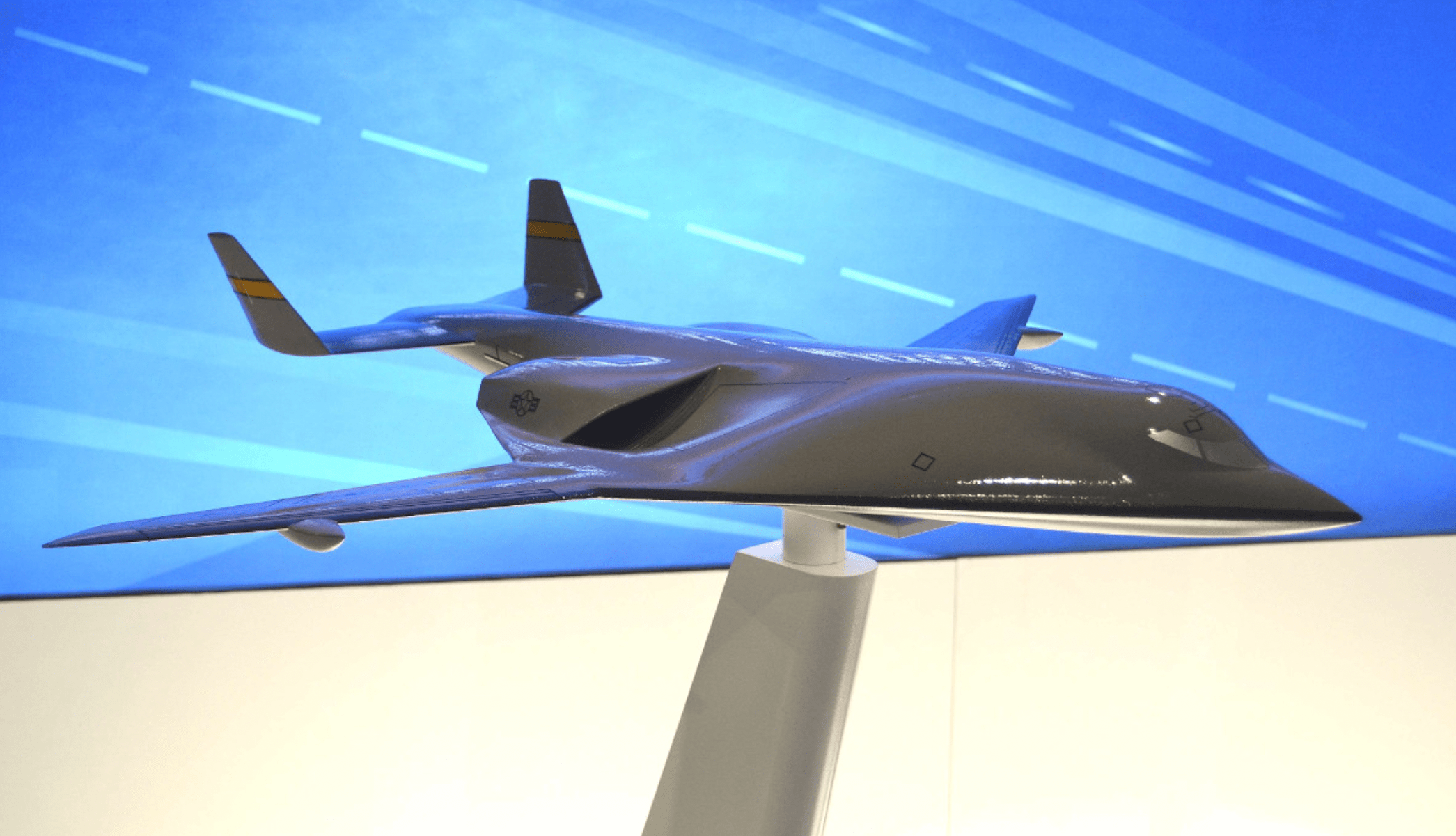
The Air Force is separately working on requirements for a successor to the C-17 Globemaster III cargo aircraft, which has been out of production since 2015. During a talk at a convention in October 2022, Secretary Kendall said that the service was looking to start more active work on a program to develop a next-generation airlifter this year.
“These future mobility concepts may be very different than our traditional ones,” Kendall said at the time, according to Aviation Week. “We need capabilities that can survive the threat of long-range air-to-air missiles. You must be able to bring mobility assets into a contested environment.”
The U.S. military’s concerns about the potential for a major fight with the Chinese military across the broad expanses of the Pacific region only underscore the need for support aircraft with increased range, too. There are just limited basing options for American forces in the Pacific, to begin with, and those that exist could well be very vulnerable to enemy stand-off strikes. Given that, aerial refueling tankers of all types will be in extremely high demand, in large part due to major U.S. military investments in tactical combat jet forces made up largely of relatively short-range fighters, and will therefore be prime targets.
It’s also worth noting that an advanced transport aircraft with reduced radar and other signatures would not necessarily have to be stealthy enough to penetrate deep into heavily defended enemy territory to be valuable. Even a design with more limited stealth features, could provide enough survivability at relevant distances in which tankers would need to operate to enable stealthy, more survivable combat aircraft. This balanced approach would impact all aspects of the aircraft’s procurement and sustainment, making it more affordable to develop and fly than a high-end exquisite stealth design capable of deep penetration missions.

Combined with lower-altitude flight to take advantage horizon masking to help hide from enemy defenses at distance, a stealthy tanker could operate even closer to higher-threat areas that would be off-limits to existing types. These tactics are already used by the tanker and transport community, but a stealthy design would close existing vulnerabilities an close the proximity to enemy air defenses that operations could occur. This could be critical to supporting forward hub-and-spoke logistics and refueling operations in a higher-end conflict, as well as other potential mission sets.
When it comes to stealthy tactical transports, the U.S. special operations community, in particular, has been exploring various novel concepts for decades, as you can read more about in this past two-part War Zone feature.
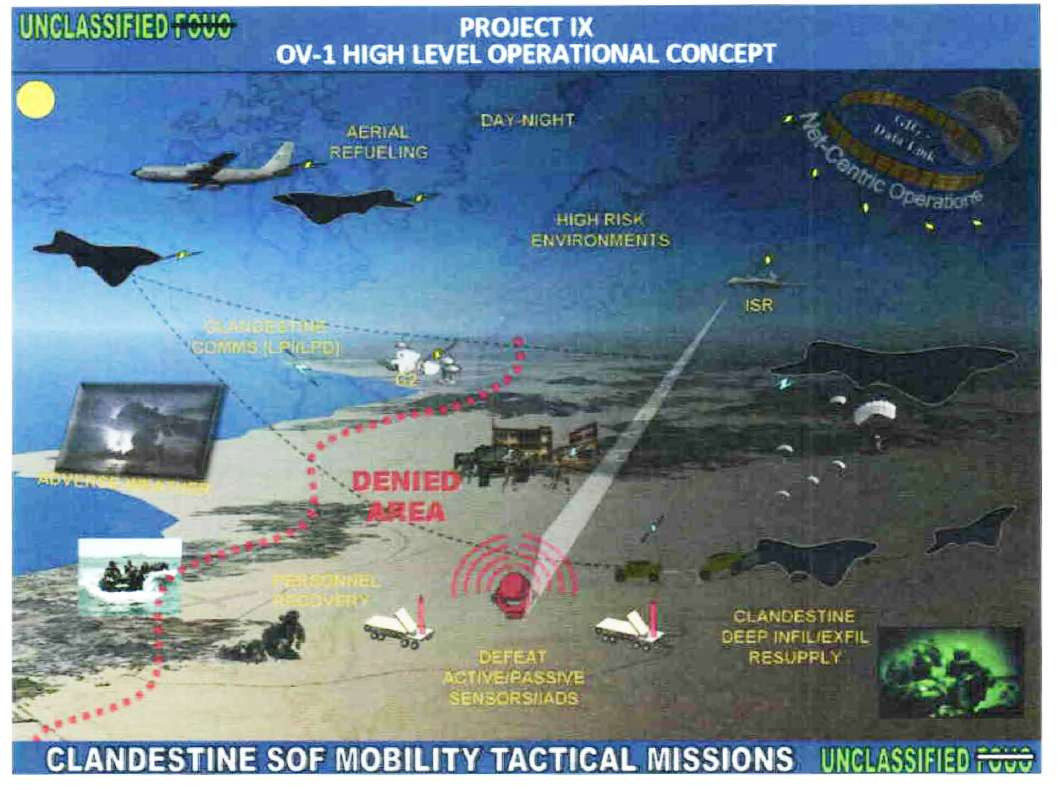
When any next-generation airlifter or aerial refueling tanker, whether or not it’s a BWB design or has stealthy features, would enter service with the U.S. Air Force, or anyone else, very much remains to be seen. “The BWB-type vehicle could be developed in the next 10 to 15 years as a subsonic transport, with a focus on military transport vehicles,” Boeing said in the statement about its newly revealed concept.
What is clear is that there is an emerging need for advanced military cargo aircraft and tankers, incorporating some degree of stealth, and that this demand is only set to grow. It will be interesting to see how Boeing’s new BWB concept evolves as various sets of requirements from the U.S. Air Force and others become more concrete.
Contact the author: joe@thedrive.com
